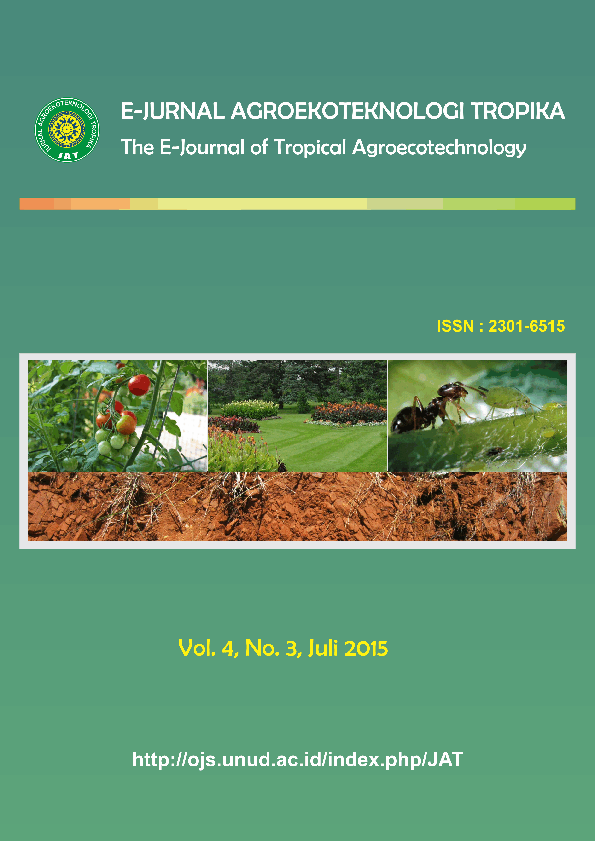Uji Efektivitas Bahan Hayati Dari Cacing Tanah (Lumbricus Rubellus) Terhadap Perkembangan Populasi Nematoda Puru Akar (Meloidogyne Spp.) Pada Tanaman Tomat Varietas Karina (Lycopersicum Esculentum Mill.)
Abstract
ABSTRACT
The Effectiveness Test of Biological Materials from the Earthworm (Lumbricus rubellus) to the Development of Root Knot Nematodes Population (Meloidogyne spp.) on the Tomato Crops of Karina Variety
(Lycopersicum esculentum Mill.)
Tomato (Lycopersicum esculentum Mill.) is one of the agricultural commodities with high economic value and widely consumed both as a vegetable and spice, and is often used as fresh fruit and healthy beverage ingredients. The aim of this study was to determine the ability of biological materials of earthworms (L. rubellus) to suppress the development of root knot nematode populations (Meloidogyne spp.), and the level of effectiveness in suppressing the development of Meloidogyne spp. This treatment consists of 5 different types of biological material treatment, namely the earthworm L. rubellus (10 birds per adult earthworms plants), fresh extract of L. rubellus (at a dose of 100 cc per plant), manure (compost) L. rubellus (dose of 100 cc per plant), capsules L. rubellus (dose of 100 cc per plant), and urine L. rubellus (dose of 100 cc per plant). The results showed that treatment using biological material from dung (vermicompost) of earthworm L. rubellus was the most effective in suppressing the development of root knot nematode population of Meloidogyne spp. in 300 g of soil that is 12 earthworms/300 g soil with an emphasis percentage of 97.6%. In the calculation of the nematode population Meloidogyne spp. per 1 g of roots, the results showed that treatment with biological material of adult earthworms L rubellus was the most effective in suppressing the development of root knot nematode population of Meloidogyne spp. ie 35 earthworms / 1 g of roots with an emphasis percentage of 93%.
Keywords: Lumbricus rubellus, Lycopersicum esculentum Mill., and Meloidogyne spp.



